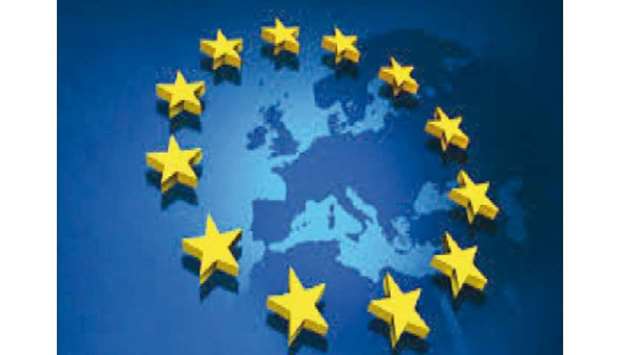A couple of years ago, the eurozone – about one-sixth of the world economy – appeared to be in serious trouble. Beginning in 2010, an unexpected sovereign debt crisis contributed to and was compounded by serious weaknesses in major banks. Fiscal austerity, in Greece and other relatively weak countries, helped fuel an overall economic downturn. In the absence of generous mutual support, there was an aura of last-ditch desperation when, in March 2015, the European Central Bank announced an ambitious programme of purchasing government debt.
Just over two years later, the situation looks much more positive. The latest International Monetary Fund forecast projects 1.7% growth for the eurozone as a whole in 2017, and 1.6% growth in 2018 – a remarkable improvement from a few years ago, when the region struggled to break 1%.
Recent solvency concerns for some smaller banks in Italy and Spain were handled without causing any significant disruption. And, at a just-concluded ECB conference that I attended, there was even some discussion of when the ECB could scale back its interventions and perhaps begin to raise interest rates. (All the sessions were on the record and live webcast.)
The immediate macroeconomic picture remains somewhat murky. On the morning of June 27, financial markets thought ECB President Mario Draghi spoke more positively on growth than in the recent past, and the value of the euro strengthened significantly. By the next morning, senior ECB officials were quoted as saying that Draghi’s remarks had been overinterpreted – and the euro fell.
The real question is what comes next, and this was the theme of the conference: what should we expect in terms of Europe’s medium-term growth potential? In particular, as long as interest rates remain low, the current level of government debt in countries such as Italy remains manageable. But as interest rates rise, will there be sufficient growth to sustain the expectation that public debt levels are sustainable?
The pro-growth achievements of the past few years are real. The ECB’s low (in fact, negative) interest-rate policies helped sustain credit in general and ensure continued financing of government deficits in particular. This took pressure off fiscal policy – and there has been less austerity than previously seemed likely. Banks have been gradually placed on a stronger footing, with more loss-absorbing equity capital. There is also some evidence that competition in product markets has increased, perhaps owing to more relaxed regulation.
There is also bad news, although not all of it is specific to the eurozone. Across industrial countries, there has been a slowdown in productivity growth – and therefore in overall economic growth – which now appears to have started around the year 2000. The precise explanation remains elusive, but the prevailing view is that while the advent of new information technology had some definite positive impact on productivity in the 1990s, the gains have not proved sufficiently long-lived or widespread.
In addition, the precise pattern of technological change has put pressure on the middle class everywhere – by reducing the demand for workers who have only a secondary-school education. This implies weak growth and widening inequality, a combination that could further undermine education and skill levels.
At the same time, European demographic trends are a source of concern. An ageing population means more retirees – expecting publicly provided pensions – relative to the number of economically active people. Europe has experienced significant immigration from countries such as Syria, Libya, and Afghanistan; but many of the newcomers have little education, and finding them employment has proved difficult.
More innovation could definitely help. Even pessimists acknowledge the incipient wave of technology in life sciences, artificial intelligence, and robotics around the world. But as China continues to emerge as a research powerhouse, there is increasing pressure on Europe to keep up.
It would be a mistake to count Europe out yet. Its human capital is sound, good health care is available to more people than in the US, and stronger companies are emerging through the process of integrating national markets.
Moreover, Britain’s decision to leave the European Union seems to have concentrated continental leaders’ minds. No one wants to repeat the policy missteps of 2010-2014. French President Emmanuel Macron is proposing a stronger central authority, including a potential finance ministry. Whether the Germans will agree remains far from clear, but it is worth recalling that building a fiscal union in the US took a very long time (and in some senses may remain an unfinished project).
The greatest cause for concern could turn out to be imbalances within the eurozone. The German economy is strong: 1.5-1.6% growth, near-full employment, and a large current-account surplus. Spain’s economy is greatly improved, experiencing 2.6% growth, but unemployment remains stubbornly – and disturbingly – high, at around 18%.
Italy remains the big question, with the IMF forecasting GDP growth of 0.8% this year and next. Can northern Italy’s family firms again prove themselves capable of growth in increasingly tough international markets? Will the next wave of new technology help or hurt them?
France, too, remains something of a wildcard. Will Macron’s stunning makeover of French politics lead to growth-enhancing reforms? If not, Germany may be less inclined to meet Macron halfway on eurozone integration.
Above all, the eurozone – or perhaps the EU – must find ways to ensure that everyone grows and benefits from growth. Whether it will succeed or not cannot be known. What is certain is that in an environment like the current one, where the worst has passed, the task has become easier. – Project Syndicate
* Simon Johnson is a professor at MIT’s Sloan School of Management and the co-author of White House Burning: The Founding Fathers, Our National Debt, and Why It Matters to You.

Euro flag
